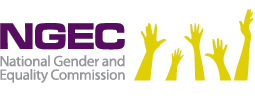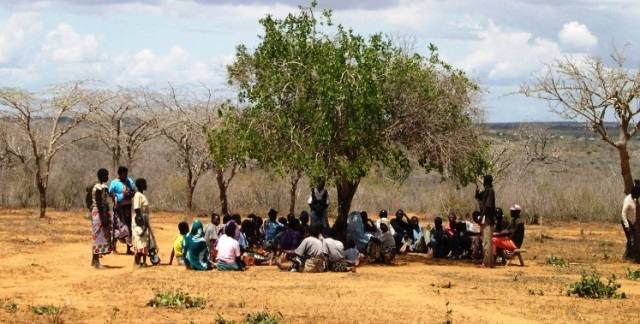Minority and Marginalised
The department has continuously worked with, partners, communities and other stakeholders to promote mainstreaming of issues of minorities and marginalized communities and groups in all spheres of development.
The department’s focus areas are;
- Undertake public education and information to sensitize minorities and marginalized and stakeholders on integration of the principles of equality and freedom from discrimination.
- Monitor, audit, and advise on the development and implementation of affirmative action policies and programmes on issues of minority and marginalised.
- Enhance participation and inclusion of minority and marginalised in all aspect of county and national development.
- Monitor performance levels of public and private institutions, county and national governments on mainstreaming issues of minority and marginalised, including representation and involvement in decision making and leadership positions and issue advisories
Who are the Minority and Marginalized?
The interpretation clause in the constitution defines “Marginalized community” to mean a traditional community that, out of a need or desire to preserve its unique culture and identity from assimilation, has remained outside the integrated social economic life of Kenya as a whole, or an indigenous community that has retained and maintained a traditional lifestyle and livelihood based on hunter or gatherer economy; or pastoral persons and communities whether they are nomadic or a settled community that because of its relative geographic isolation has experienced only marginal participation in the integrated social and economic life of Kenya as a whole.
The same clause defines marginalised group as a group of people who, because of laws or practices before, on, or after the effective date, were or are disadvantaged by discrimination on one or more of the grounds in Article 27 (4)
Minorities under international law
Adopted by consensus in 1992, the United Nations Minorities Declaration in its article 1 refers to minorities as based on national or ethnic, cultural, religious and linguistic identity, and provides that States should protect their existence.
According to a definition offered in 1977 by Francesco Capotorti, Special Rapporteur of the United Nations Sub-Commission on Prevention of Discrimination and Protection of Minorities, a minority is: A group numerically inferior to the rest of the population of a State, in a non-dominant position, whose members - being nationals of the State - possess ethnic, religious or linguistic characteristics differing from those of the rest of the population and show, if only implicitly, a sense of solidarity, directed towards preserving their culture, traditions, religion or language.
Activities undertaken
- Guided the County Governments on the composition of county governance and administrative structures aimed at expanding opportunities for the inclusion and participation of the minority and marginalised in all development agendas
- Contributed to the development of marginalization policy and the sharing of the Equalization Fund in Kenya
- Increased the knowledge base among the minority and marginalized communities and groups through public education and information sharing on their rights and obligations
- Audit of emerging exclusion on land use and natural resource management among minority and marginalised communities in response to the Truth, Justice and Reconciliation Commission (TJRC) Report.
- Fundraising initiatives-Prepared Grant Applications seeking to have funds for the department activities.
Gains for minorities and marginalized in the constitution
Article 56 provides that the state should put in place affirmative action programmes designed to ensure that minorities and marginalised groups participate and are represented in governance and other spheres of life; are provided special opportunities in education and economic fields; are provided special opportunities for access to education; develop their cultural values, languages and practices; and have reasonable access to water, health services and infrastructure
Article 44(1) states that every person has the right to use the language, and to participate in the cultural life, of the person’s choice
(2) A person belonging to a cultural or linguistic community has the right, with other members of other community to enjoy the person’s culture and use the person’s language; or to form, join and maintain cultural and linguistic associations and other organs of civil society. The same article states that a person shall not compel another person to perform, observe or undergo any cultural practice or rite”
III. Article 204 establishes Equalization Fund which is intended to provide basic services including water, roads, health facilities and electricity to marginalized areas to the extent of the extent necessary to the quality of those services in those areas to the level generally enjoyed by the rest of the nation, so far as possible
IV. Article 100 advocates for promotion of representation of marginalized groups. The article states that parliament shall enact legislation to promote the representation in parliament of women; Persons with disabilities; youth; ethnic and other minorities; and marginalised communities
V. The constitution recognizes dual citizenship. This paves the way for indigenous communities, like the Somalis, Borans and the Maasai, that live across boundaries to benefit.
VI. Chapter five of the new constitution classifies land as public, community and private. Under Article 63, community land shall vest in and be held by communities identified on the basis of ethnicity, culture or similar community of interest. Community lands include those lawfully held in the name of group representatives, lands lawfully transferred to a specific community and any other land declared to be community land by any Act of parliament. It will also include lands lawfully held, managed or used by specific communities as community forests, grazing areas or shrines and ancestral lands and lands traditionally occupied by hunter gatherer communities
VII. Article 7 of the new constitution obliges the state to promote and protect the diversity of language of the people of Kenya. The state is also obliged to promote the development and use of indigenous languages.
VIII. Article 11 recognizes culture as the foundation of the nation and obliges the state to promote all forms of cultural expression through literature, the arts, traditional celebrations, science, communication, information, mass media, publications, libraries and other cultural heritage. The state is also obliged to recognize the role of indigenous technologies in the development of the nation.
IX. Article 177(c) talks of the representation of members of marginalised groups, including persons with disabilities and youth in the county assembly.
Factors driving Exclusion and marginalization (TJRC Report)
- Poverty
- Underrepresentation in decision making
- Cultural attrition through assimilation
- Political exclusion and discrimination
- Identity dilemma
- Limited access to educational opportunities
- Historical Biases
- Negative stereotypes
| Report | Link |
|---|---|
| Flares of marginalization among Selected Minority Communities of Kenya | link |
Minority and Marginalised


Comments